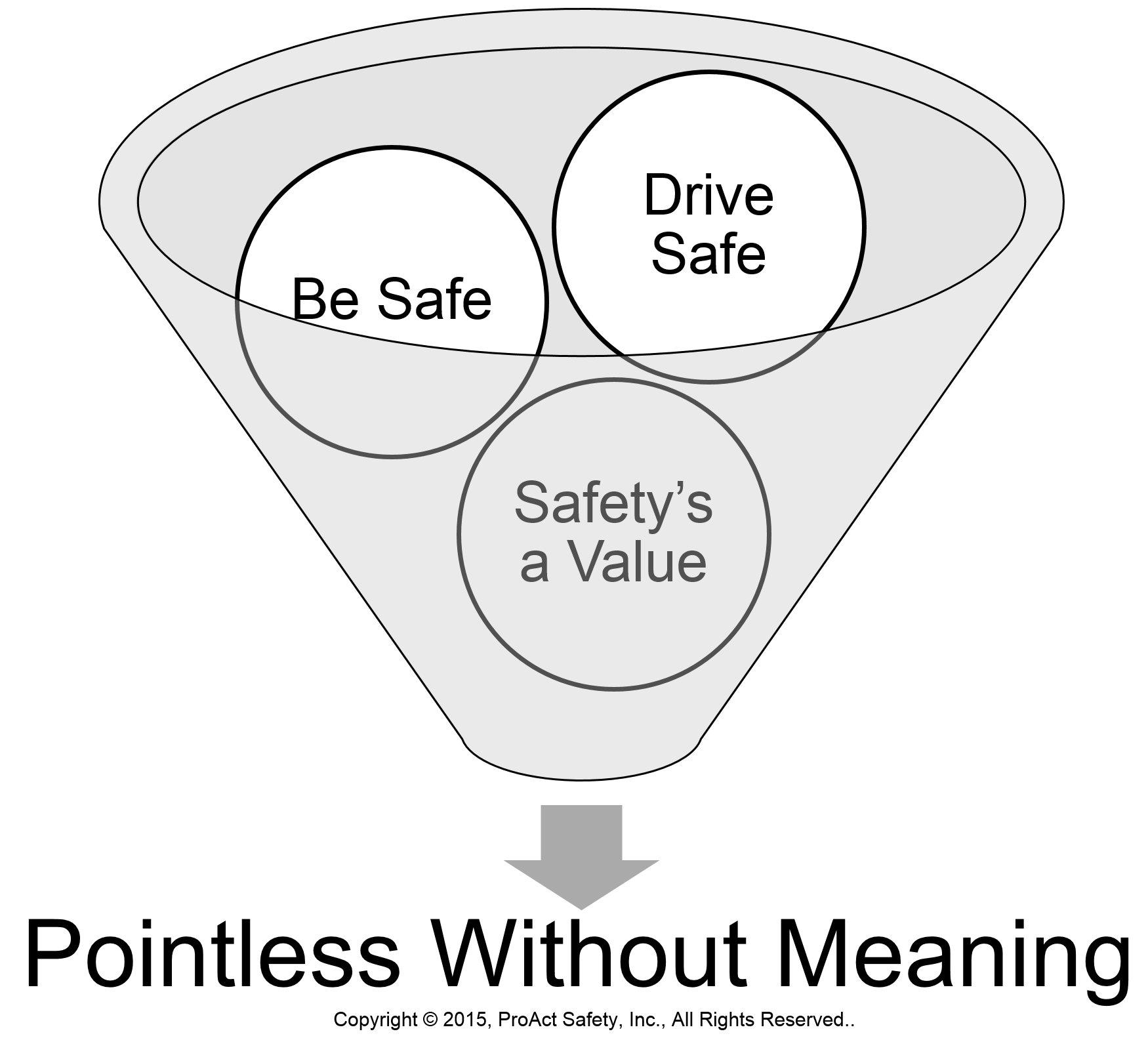Occupational Health & Safety - May 2015
By: Shawn M. Galloway
Printable Version
Be safe. Drive safely. We care. Safety is a value. Too often, these are pointless, empty statements. We should always start with making workplace conditions, machinery and processes safe before focusing on the behaviors of employees. Everything we do in this regard, while critical, remains at the jobsite at the end of the work day. What tactics do the employees retain to ensure they return injury-free the following day?
In many countries, employees are more likely to become injured off the job than on. Not only is it prudent to enable employees to make safe choices when they are away from our employ, it is vital for business continuity, as an employee seriously injured at home is just as absent. Safety efforts must be portable and have tremendously more meaning than most slogans and reminders.
Drive Safely!
Several years ago I was working with a client south of Newark, New Jersey. When heading down the NJ Turnpike, you could see a chemical tank farm on the right that held a large painted community reminder stating "Drive Safely!" I appreciated the intent of the message, but what does driving safely mean? If you have had children at driving age, when learning how to drive, did you place them behind the vehicle and set them off with a well-wish to drive safely? Probably not; but this is precisely what we often do at work: "Be safe today!"
For young drivers, we try to provide safe vehicles, and we provide individual instruction into what driving safely looks and feels like. We provide feedback when they are acting this way and when they are not. We are coaching for performance whether we realize it or not. We need to provide a safe environment for our workers, and we need to coach (providing a balance of consequences for if they act this way and if they don't) for specific safety performance as well. This is a leadership responsibility.
It's Not Enough to Care About Safety
I have no doubt you care about the people you employ, oversee, or are responsible for. In fact, I'm sure you remind them on a regular basis to be safe, perhaps even stating precisely this (be safe). We at ProAct Safety define safety as: 1.) Knowing the risks, 2.) Knowing what precautions to take to control the risks, and 3.) Regularly taking these precautions. At home, do all your employees know the most likely risks, know what precisely they need to do to control those risks and regularly do what is needed?
Ten years ago I learned a very valuable lesson. It is not enough to care about safety; one must know precisely what to do to be safe. The Executive Vice President of Operations for a new client organization hired us to transform the safety performance and culture within his Fortune 50 Company. Knowing this would be a long journey, we began to work immediately with our sponsor, the EVP. Henry cared a lot about safety and this was known to all that interfaced with him. Two weeks after our work began, tragedy occurred.
His wife told the company that one evening Henry awoke to use the restroom. Not seeing the magazine near his bedside on his carpeted floor, he slipped and hit his head on the nightstand. Clearly, by his use of choice phrases, he was injured. Unfortunately, he simply returned to original mission, and returned to bed not realizing he was internally hemorrhaging. He was forty-two years old with three children, and he lost his life that evening.
Provide Meaning to Otherwise Empty Statements
Statements like "Be safe today!" are, indeed, initially beneficial in the early development of a culture of safety excellence. Values are created when a belief is reinforced at or near the point of decision. Reminding people to be safe ten times a day rather than once a month will help create the belief that safety is important, but it will reach a point of diminishing returns when others cannot decipher what is meant when told to "Be safe", "Drive safely", or that "Safety is a value."

To make safety a shared value, organizations must be purposeful and precise regarding which beliefs and behaviors exist and are common. If we want people to be safe, we must define what this means in observable action. This, in turn, allows us to coach those behaviors, helping others improve their performance both on and off the job and in and out of the vehicle. If we allow slogans and statements to have no meaning and if they don't facilitate portability, safety improvement efforts might start at the entrance of the workplace, but they may end there as well.
 Shawn M. Galloway is the CEO of ProAct Safety and co-author of several bestselling books. As an award-winning consultant, adviser, leadership coach and keynote speaker, he has helped hundreds of organizations within every major industry to improve safety strategy, culture, leadership and engagement. He is also the host of the highly acclaimed weekly podcast series Safety Culture Excellence®.
Shawn M. Galloway is the CEO of ProAct Safety and co-author of several bestselling books. As an award-winning consultant, adviser, leadership coach and keynote speaker, he has helped hundreds of organizations within every major industry to improve safety strategy, culture, leadership and engagement. He is also the host of the highly acclaimed weekly podcast series Safety Culture Excellence®.
For more information, call (936) 273-8700 or email info@ProActSafety.com.
